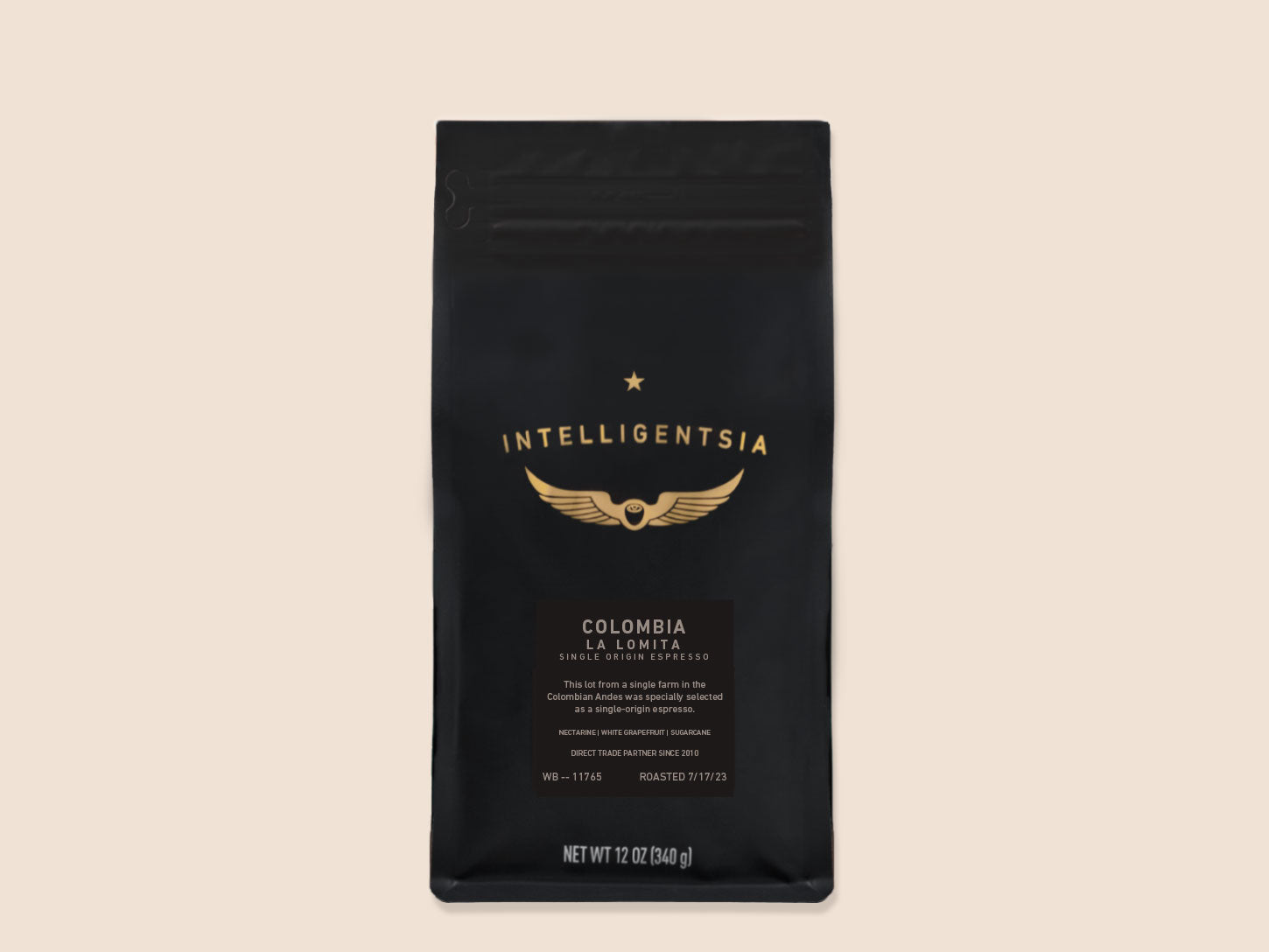Expert Advice to Get the Best Out of SOE Single Origin Espresso
Expert Advice to Get the Best Out of SOE Single Origin Espresso
Blog Article
Comprehending Coffee Beans: the Journey From Espresso to Blended Coffee Beans

The Beginnings of Coffee: An International Point Of View
While you might think about coffee as a modern-day staple, its origins trace back centuries, intertwining with societies around the world. The tale begins in Ethiopia, where tale claims a goat herdsman called Kaldi found the energizing effects of coffee beans after observing his goats romping vigorously after eating them. This stimulated rate of interest, causing coffee's infect Arab traders that valued the brewed drink. By the 15th century, it got to Persia, Egypt, and Turkey, where coffeehouses came to be social centers for conversation and culture.
As trade courses increased, coffee made its way to Europe in the 17th century, rapidly gaining popularity. Each society included its unique twist to coffee prep work, enriching its history.
Farming and Harvesting of Coffee Beans
As coffee's trip progressed, the emphasis shifted to the growing and harvesting of specific bean ranges, specifically those utilized for espresso. You'll discover that coffee beans commonly originate from Arabica or Robusta plants, each offering distinct tastes. The optimal expanding conditions consist of high altitudes and abundant, well-drained dirt, which boost the beans' top quality.
During the harvest, picking approaches differ. Timing is important; you desire to gather when the cherries reach peak perfection for maximum flavor.
When gathered, the beans are prepared for handling, which is crucial in identifying their final preference. Understanding the farming and gathering processes gives you understanding into what enters into your preferred coffee, enhancing your appreciation for each and every cup.
Handling Techniques: From Cherry to Bean
Currently that you've discovered collecting coffee beans, allow's check out just how those cherries transform right into the coffee beans you love. You'll see just how different harvesting strategies impact taste, complied with by the important actions of fermentation and drying. Lastly, we'll damage down the milling and grading process that identifies your coffee's top quality.
Gathering Strategies Discussed
When it comes to coffee, comprehending harvesting strategies is necessary, since they straight influence the taste and quality of the beans you appreciate. There are two key techniques: selective selecting and strip picking. Discerning picking includes hand-picking just ripe cherries, ensuring you obtain the finest high quality beans. This technique usually leads to a richer flavor profile, though it's more labor-intensive. On the other hand, strip picking methods harvesting all cherries simultaneously, no matter of ripeness. While it's quicker and more affordable, this can lead to a mix of flavors, impacting the end product. Ultimately, the option of gathering strategy can greatly influence your coffee experience, so it's worth recognizing just how those beans made it to your mug.
Fermentation and Drying Out
After collecting, the following actions in processing coffee beans play a considerable duty fit their taste. You'll discover that fermentation is essential, as it aids damage down the mucilage bordering the beans, enhancing their preference profile. Depending upon the approach, this process can last from a couple of hours to a number of days, with differing results based upon temperature and humidity.
When fermentation is full, drying out adheres to, which is similarly vital. You can select from sun-drying or mechanical drying out methods. Sun-drying enables the beans to soak up flavors from the setting, while mechanical drying guarantees constant wetness degrees no matter weather condition. Correct drying is necessary to protect against mold and preserve the beans' top quality, ultimately affecting your cup of coffee.
Milling and Grading Refine
As fermentation and drying established the phase for taste advancement, the milling and grading procedure guarantees that only the finest coffee beans make it to your cup. This stage includes eliminating the outer layers of the coffee cherry, consisting of the parchment and husk. High-quality beans obtain a higher quality, resulting in a richer coffee experience.
Toasting Techniques: Opening Flavor Potential
When you roast coffee beans, the approach you pick can substantially affect the taste account. Understanding the partnership between time, temperature level, and toasting techniques is essential to revealing the possibility of your brew. Let's check out exactly how these components come together to create the ideal cup.
Toasting Approaches Described
While you may think that all coffee roasting methods yield the very same outcomes, the fact is that each strategy exposes one-of-a-kind taste possibilities in the beans. Drum roasting makes use of a turning drum to equally disperse warm, boosting caramelization and creating a well balanced taste. Air roasting, on the other hand, circulates hot air around the beans, advertising a lighter roast with pronounced acidity.

Effect on Taste Profile
Different toasting techniques not just influence the process however additionally substantially affect the taste account of the coffee beans. Dark roasts, on the other hand, bring out strong, smoky tastes, often masking the bean's distinct features. Comprehending these nuances aids you appreciate the virtuosity behind your cup of coffee, enhancing your total experience with every sip.
Time and Temperature Level Factors
To launch the full flavor capacity of coffee beans, both time and temperature throughout the toasting procedure play substantial roles. When toasting, you'll discover that higher temperature levels can swiftly create flavors, yet if you rush it, you could end up with burned notes. On the other hand, reduced temperatures enable an extra progressive flavor development, showcasing the beans' unique qualities.

Timing is simply as crucial; prolonging the roast as well long can bring about a loss of level of acidity and illumination, while as well short a roast could leave the beans underdeveloped. Locating that pleasant place requires practice and experimentation. By changing these factors, you can expose the rich, complicated tastes hidden within each bean, creating a genuinely remarkable coffee experience.
The Art of Mixing: Crafting Unique Coffee Accounts

Beginning by choosing a base coffee that offers a solid foundation. A brilliant Ethiopian bean can bring fruitiness, while a rich Brazilian coffee adds body.
As you blend, remember that each combination tells a tale. You're not just making coffee; you're producing an experience. Take your time, preference regularly, and take pleasure in the trip of finding your signature blend - Single Origin Espresso.
Developing Approaches: Just How Preparation Impacts Taste
Blending coffee opens up a domain name of taste possibilities, yet just how you brew that mix can considerably influence your last cup. On the other hand, a pour-over highlights the coffee's clarity and illumination, excellent for showcasing delicate notes.
Espresso, with its high stress, produces a focused shot that emphasizes sweet taste and crema. If you like a lighter brew, think about a cold mixture approach; it generates a smooth, much less acidic taste.
Changing variables like water temperature, grind dimension, and make time can transform your coffee's profile. Accept read this article the art of brewing to find the tastes hidden in your coffee blends.
The Future of Coffee: Sustainability and Technology
As the coffee industry progresses, sustainability and technology are becoming necessary for dealing click here to read with ecological challenges and meeting consumer needs. You'll see that more coffee companies are taking on environmentally friendly practices, from sourcing beans fairly to applying lasting farming techniques. These shifts not only assist the earth yet also improve the top quality of the coffee you enjoy.
You may see technologies like naturally degradable product packaging and water-saving developing approaches that lower waste. Advanced technology, such as blockchain, is also becoming popular, guaranteeing openness in the supply chain, which enables you to trace your coffee back to its beginnings.
In enhancement, spending in neighborhood areas and sustaining farmers through fair trade initiatives promotes a much more lasting coffee ecosystem. As you sip your next cup, keep in mind that your options can add to a brighter future for coffee. By selecting sustainable brand names, you're not simply appreciating a beverage; you're making a positive effect on the world.
Often Asked Questions
What Is the Distinction In Between Arabica and Robusta Beans?
Arabica beans are smoother, sweeter, and have a higher level of acidity, while robusta beans are more powerful, a lot more bitter, and have more caffeine. You'll observe these differences in flavor and scent when making your coffee.
How Does Altitude Affect Coffee Bean Flavor?
Altitude impacts coffee bean taste considerably. Greater altitudes create beans with brighter level of acidity and complicated flavors, while lower elevations frequently yield beans that are heavier and less nuanced. You'll see these differences in your cup!
What Are the Health Benefits of Alcohol Consumption Coffee?
Consuming alcohol coffee can boost your energy, boost mental emphasis, and even improve physical performance. It's abundant in antioxidants, might decrease the risk of specific conditions, and can promote a much healthier metabolism when consumed in small amounts.
Can Coffee Beans Be Recycled for Developing?
Yes, you can recycle coffee beans for brewing, however the taste may be weaker. If you Visit Your URL appreciate experimenting, attempt recycling them in different methods, like cool mixtures or contributing to smoothie mixes for an extra kick.
Exactly how Should I Store Coffee Beans for Freshness?
To maintain your coffee beans fresh, save them in a closed container in an awesome, dark area. Prevent exposing them to light, warm, or moisture, as these variables can swiftly degrade their taste and aroma.
Recognizing Coffee Beans: the Trip From Espresso to Blended Coffee Beans.
Currently that you have actually learned regarding harvesting coffee beans, let's discover how those cherries transform into the coffee beans you like.When you roast coffee beans, the approach you choose can significantly influence the taste profile - Single Origin Espresso.While you may believe that all coffee toasting approaches yield the exact same outcomes, the fact is that each technique exposes unique flavor possibilities in the beans.Different toasting methods not only influence the procedure however also substantially impact the taste profile of the coffee beans
Report this page